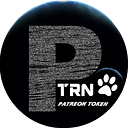Vaquita
Facts
The world’s rarest marine animal, the Vaquita, is on the verge of extinction. The fast collapse of the vaquita in Mexico, with only approximately 10 individuals living, exemplifies the condition of cetaceans as a whole — whales, dolphins, and porpoises. This tiny porpoise wasn’t spotted until 1958, and now, more than half a century later, we’re on the verge of extinction. Vaquitas are frequently trapped and drowned in gillnets employed by illicit fishing activities in Mexico’s Gulf of California marine protected areas. In recent years, the population has decreased dramatically.
- STATUS: Critically Endangered
- POPULATION: About 10 individuals
- SCIENTIFIC NAME: Phocoena sinus
- HEIGHT: Up to 5 feet
- WEIGHT: Up to 120 pounds
- HABITATS: Marine (only in the northern Gulf of California)
A wide dark ring surrounds the vaquita’s eyes, and dark patches on its lips form a thin line running from the mouth to the pectoral fins. It has a dark gray dorsal surface, pale gray sides, and a white underside with long, light gray patterns on the ventral surface. A wide gray fringe of color runs from the head to the flukes, passing between the dorsal and pectoral fins, and is present in newborn vaquita. They prefer to stay close to shore in the Gulf’s shallow waters, but if a boat approaches, they will immediately swim away.
Why They Matter
The vaquita is the world’s most endangered cetacean. With only about ten individuals left, the species will become extinct unless a complete gillnet ban is enacted across its entire habitat. The WWF is working hard to guarantee that they can survive and prosper in their natural environment.
Threats
If fishing bycatch is not addressed promptly, the vaquita will become extinct. Nearly one in every five vaquita is entangled in gillnets designed for other marine species, such as the totoaba, a critically endangered fish located in the upper Gulf of California. The principal reason for the vaquita’s extinction by the mid-1970s was entanglement in totoaba gillnets. Totoaba were overfished by the mid-1970s, and Mexico and the United States declared them endangered in 1975 and 1979, respectively.
International trade in totoaba is currently prohibited by CITES, a global agreement among states to control or prohibit international trade in threatened species, but rising demand for the swim bladder from China has resulted in an increase in illegal totoaba fishing in recent years. The assumption in Chinese medicine that totoaba swim bladders can heal a range of illnesses and disorders has fueled demand. Thousands of swim bladders are dried and smuggled out of Mexico, frequently through the US. Fishermen receive around $4,000 per pound of totoaba swim bladder, which is roughly half a year’s worth of income from legal fishing. The dramatic reduction of vaquita numbers is being driven by this illegal trade.
Patreon Token — Patronize of Animals and Environment
Website: https://patreontoken.com
Get to know the Patreon Token
The Patreon Token is a cryptocurrency created by three pet-friendly crypto fans to create support for the animal welfare and conservation organizations they love, anytime, anywhere. The Patreon Token was created on December 01, 2021. It is made of 88 million pieces and each cryptocurrency can be divided into 8 decimal places.
Our goal
Our team will distribute a minimum of 80 million PTRN tokens to various aid organizations. This means that we want to send 8,000 tokens for free to at least 10,000 animal welfare and conservation organizations, which can be sold to generate revenue. The remaining 8 million tokens will be used to develop to our project. The most important thing for us is that all animal welfare and conservation organizations on the planet can be easily and instantly supported by everyone, wherever they live or stay in the world.
